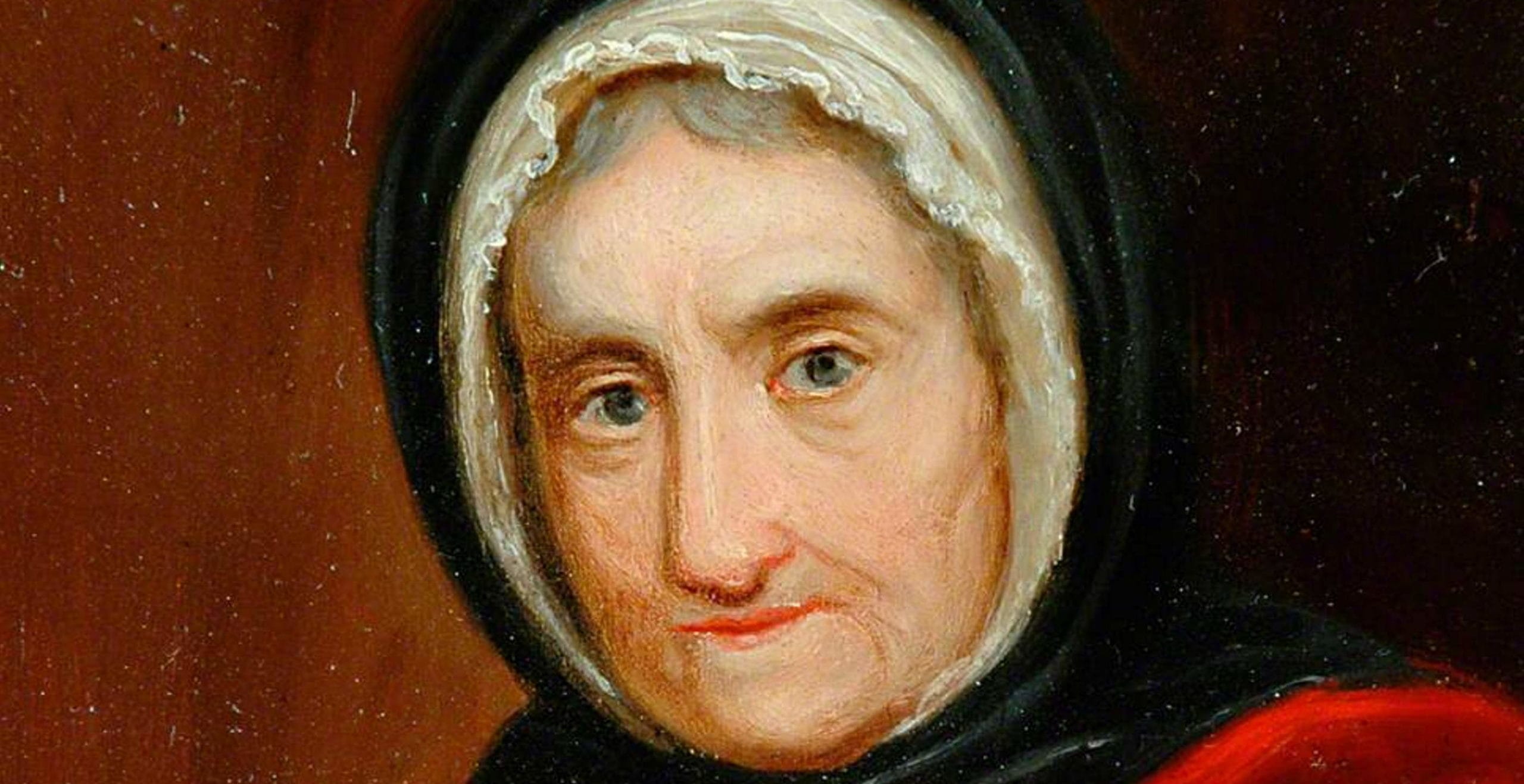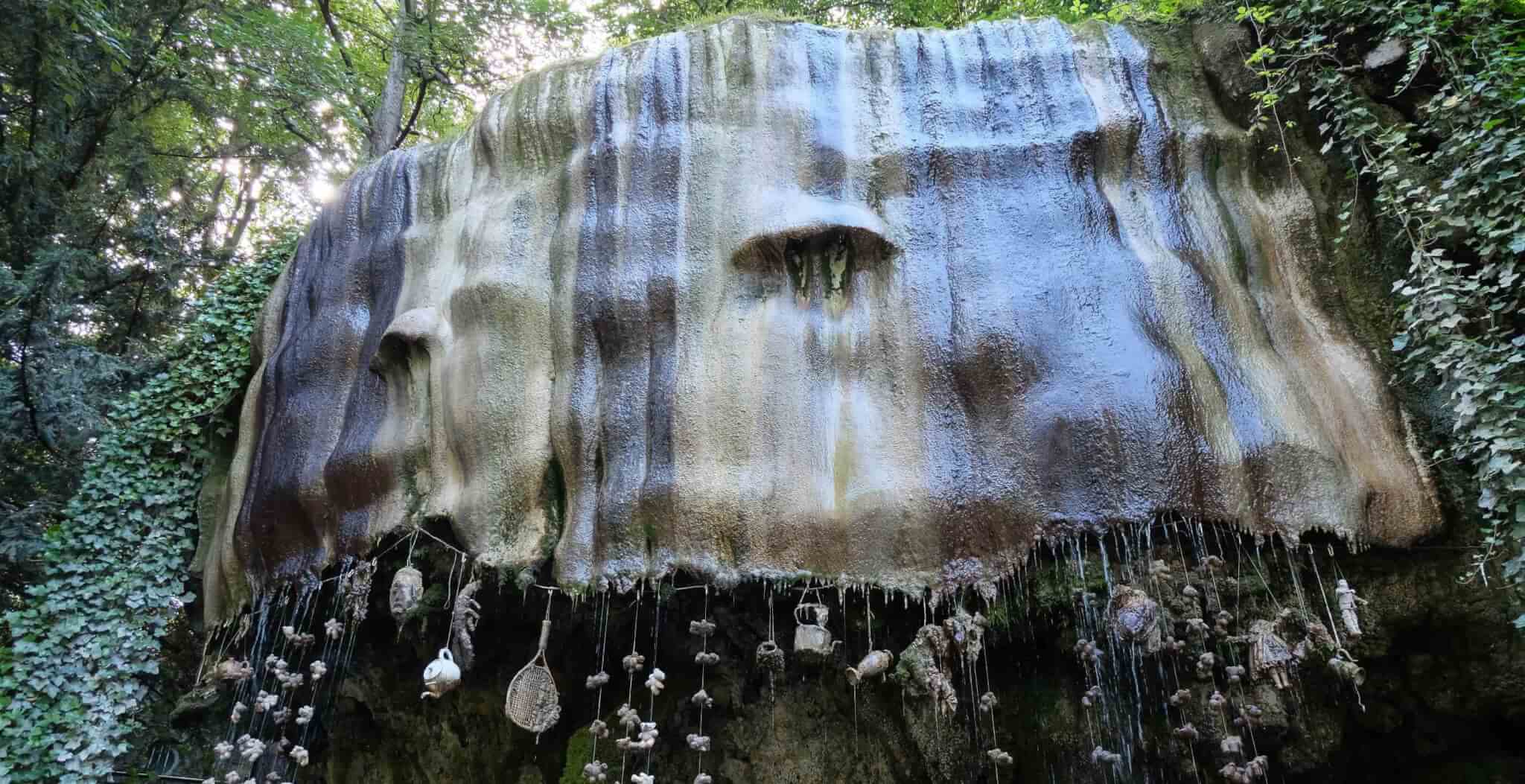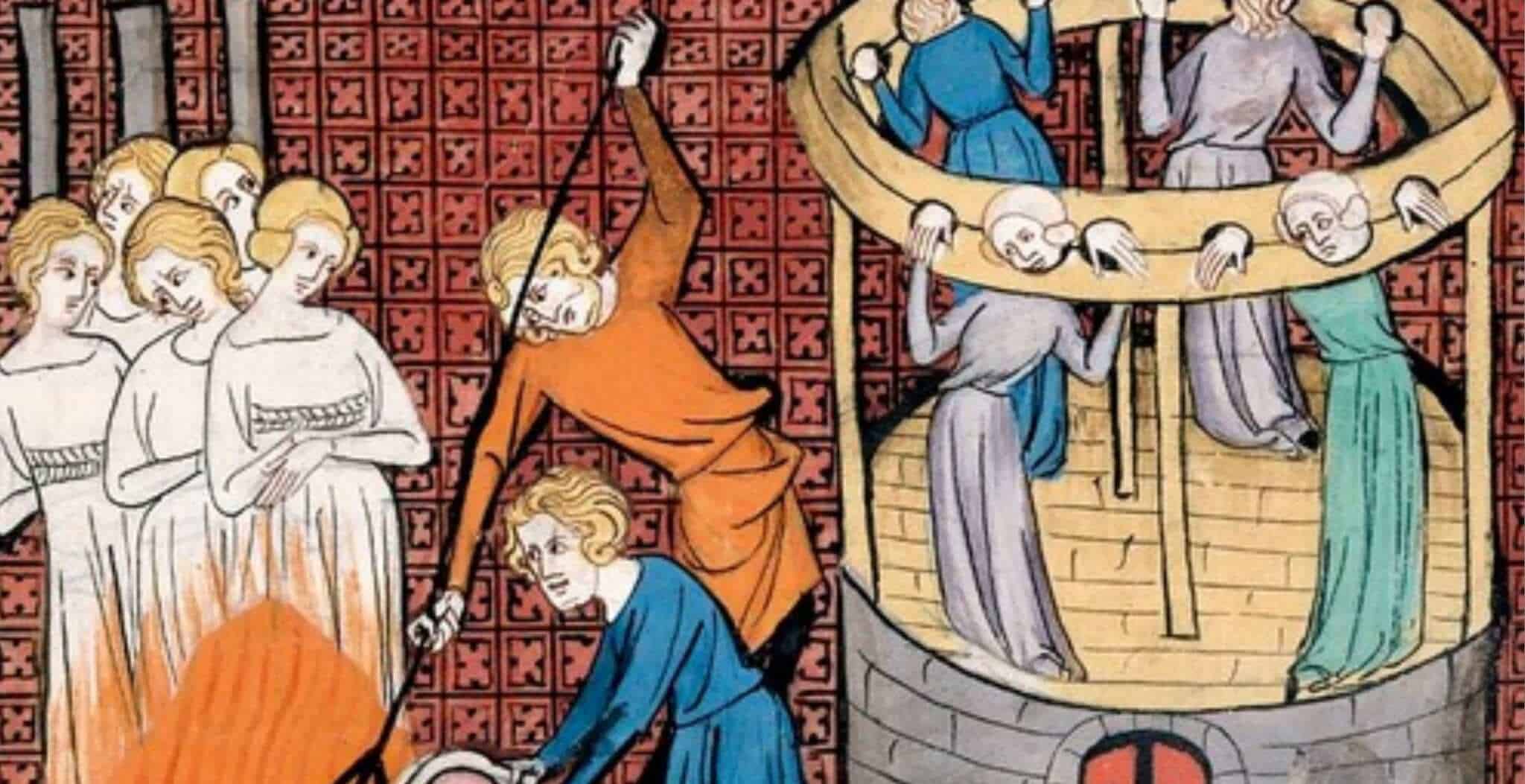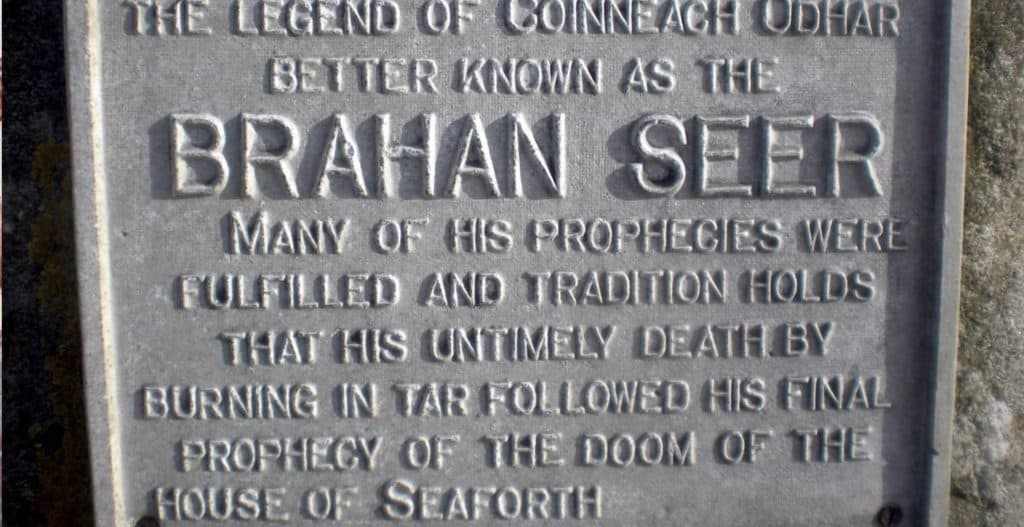In North Yorkshire, along the River Nidd, one can find the birthplace of Ursula Southeil, better known as the soothsayer Mother Shipton.
Within her lifetime she had several premonitions about some of the largest historical events to take place in England, such as the Great Fire of London and the Spanish Armada. After passing away in 1561, aged seventy-three, she remained an important local phenomenon in her hometown of Knaresborough and the remnants of a cave in which she lived, situated close to the Petrifying Well, can be visited.
Mother Shipton began her life in this cave in the Knaresborough woodland in 1488. She was born during a dark and stormy night, the daughter of a fifteen-year-old called Agatha who named her only daughter Ursula.
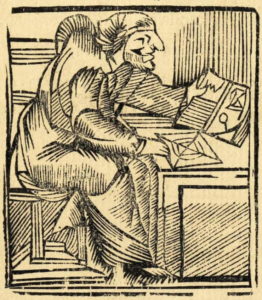
As soon as she was born, her life would be the subject of scrutiny and controversy, particularly when her mother refused to reveal the identity of Ursula’s father.
Within no time at all, speculation about this mysterious child began to circulate with later sources describing the child’s appearance as ugly, deformed and witch-like from birth.
Her destitute young mother was thought to be herself an orphan and lacked the ability to support her daughter.
Whilst she refused to give details of the father, she became ostracised from the local community and thus Ursula too, was shunned and the two desperate souls were forced into the forest as pariahs.
Some believed that the child’s conception was the work of the Devil, with many accusing Agatha too of being a witch.
Such accusations of witchcraft in early medieval Europe were not uncommon and often affected women, who for whatever reason, were living alone or were without family or friends.
Even under pressure from the local magistrate, Agatha refused to tell anyone who had fathered her child and thus rumours she had given birth to the Devil-child began to circulate.
After being forced into isolation in the forest of Knaresborough, young Agatha, alone and without any means to support herself let alone a child, raised Ursula in a cave on the banks of the River Nidd.
Adding to the scrutiny and scare-mongering, the cave in which she sheltered contained a pool which was well-known amongst locals for being shaped like a skull. The ostracised couple would be forced into a bleak existence in the middle of woodland far away from judgemental eyes and the local rumour mill.
Two years later, her plight was noticed by the Abbott of Beverley who empathised with Agatha’s situation, offering assistance in the form of a local family who would take Ursula in and look after her, whilst Agatha would be taken away to a distant nunnery in Nottinghamshire, never to be seen again.
Poor Agatha would die a few years later at the nunnery, never having been reunited with her daughter.
Meanwhile, Ursula remained in the local area, raised by another family. This however did little to stifle the gossip.
Her appearance and behaviour was said to have been strange and so attracted much ridicule from others in the town.
She has been described as having a twisted body and large crooked nose which led many people to openly tease her, even when she was just a child.
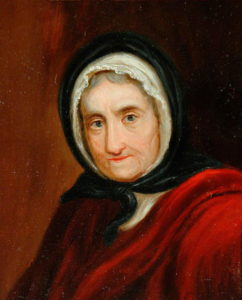
Moreover, such public scorn naturally fuelled more outrageous stories of Ursula. Apparently when she was a toddler, she was found cackling in her foster mother’s kitchen alone with pots and pans. Another much talked about incident included the time a parish meeting was disrupted when she played tricks on the local men who had been mocking her through the window.
The talk of strange and unexplained phenomenon’s occurring in retaliation for ridiculing her, quickly were interpreted as a sign by those wishing to demonise her: that if you dared to publicly mock Ursula, you could soon expect to be on the receiving end of her wrath.
Ursula dealt with the local community by keeping to herself and journeying off into the woodland and to the cave where she had been born. It was here that she studied the local woodland in great detail, enabling her to devise potions, remedies and concoctions made from the local flora.
In no time at all, awareness of Ursula’s abilities and knowledge as an herbalist began to grow within the community and she soon became a very called-upon resource for those wishing for her to cure their ailments.
Ursula’s talents helped to ingratiate her within the community and it was at this time that she came into contact with a carpenter from York called Tobias Shipton.
Now aged twenty-four, Ursula and Tobias soon married and she became Mrs Shipton, leading to consternation from others who were so surprised that he had asked her to marry him that some claimed she must have put a spell on him.
A month after their marriage, Ursula helped out a neighbour who had had some items of clothing stolen from her home. The following day a woman went walking through the town singing “I stole my neighbours smock and coat, I am a thief” before handing it over to Shipton and leaving with a curtsy.
Such tales would only add to the mystery and intrigue surrounding Ursula, however her life would be beset by personal tragedy leading to her estrangement from the community once again. Only two years after marrying, Tobias Shipton passed away, leaving her to become a social outcast once more as some cast aspersions as to the circumstances of his death.
The inference that she had been involved in his passing led her to flee once more to her safe place in the woods.
It was here that she would come into her own, continuing her practise of creating herbal remedies whilst also dabbling in the odd premonition.
At this point, now referred to as Mother Shipton, people would seek her out in order to not only find cures for their malaise but answers to their questions.
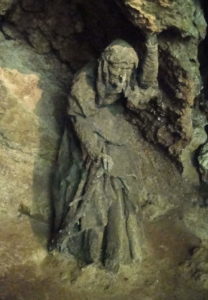 Scultpure of Mother Shipton in the cave that is her alleged birthplace, in Knaresborough. Licensed under the Creative Commons Attribution 3.0 Unported license.
Scultpure of Mother Shipton in the cave that is her alleged birthplace, in Knaresborough. Licensed under the Creative Commons Attribution 3.0 Unported license.
She would begin these predictions in small ways, noting minor occurrences that would happen locally before moving onto larger predictions with greater ramifications.
One such local prediction did not initially resonate with the town’s residents and involved a prophecy that water would come over Ouse Bridge and reach a windmill that would be set on a tower.
This claim did not make much sense at first, however when the water system was introduced, bringing water across the Ouse Bridge in pipes that reached a windmill, the prophecy did not seem so cryptic.
Another of Mother Shipton’s local prophecies included the destruction of Trinity Church which would “fall in the night, till the highest stone in the church be the lowest stone of the bridge”. Not long after this statement, a terrible storm fell upon Yorkshire, destroying the steeple of the Church and causing it to land upon the bridge.
Such prophecies increased her public profile, so much so that knowledge of her abilities would extend far and wide with some speculation that even King Henry VIII was referencing Mother Shipton in a letter to the Duke of Norfolk in which he mentions, “a witch of York”.
Moreover, in the famous diarist Samuel Pepys account of the Great Fire of London, he includes the details of hearing the Royal Family discuss Mother Shipton’s predictions of such an event.
As her reputation grew, so too did belief in her abilities, enabling her to make a living out of her prophecies.
Her predictions would extend to some of the most important people in the land including King Henry VIII himself and his right-hand man at the time, Thomas Wolsey.
In one of her prophecies, she refers to Wolsey as “the mitered peacock’s lofty cry shall to his master be a guide”. This description alludes to Wolsey’s lower class background as the son of a butcher, before he rose to become a chief advisor to King Henry and guide his policy-making.
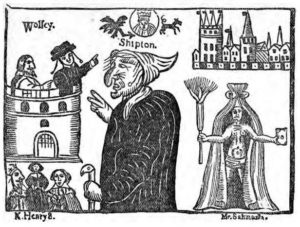
Moreover, in a pamphlet dated 1641 which is one of the earliest surviving records of her predictions, she foresees Thomas Wolsey’s fate at the time of his demise, after he had fallen out of favour after failing to secure the annulment of Henry VIII’s marriage to Catherine of Aragon. On a journey between London and York he died from natural causes, a point which Mother Shipton had made when she claimed that Wolsey would never reach his destination.
Whilst her mysticism proved unnerving for some, in such a high-profile case such as predicting Cardinal Wolsey’s fate, or the ensuing dissolution of the monasteries by Henry VIII, her status and fame reached dizzying new heights.
Despite her recent popularity, Mother Shipton remained an elusive figure that continued to mystify and intrigue those who came into contact with her.
At the age of seventy-three she died but the memory of her unusual life and powers continued to be talked about long after she was gone. Indeed an account of Mother Shipton’s life and prophecies was published in 1641, eighty years after her death.
Mother Shipton had lived a difficult life, dominated by ridicule and suspicion. However her mystical skills rescued her from her status as a social pariah and today has placed her firmly within the pages of English folklore and legend.
Jessica Brain is a freelance writer specialising in history. Based in Kent and a lover of all things historical.
Published: 5th April 2022
